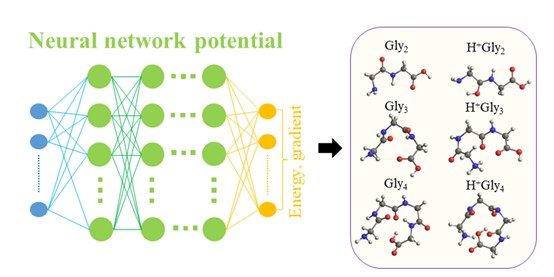

Searching low-energy conformers of neutral and protonated di-, tri-, and tetra-glycine using first-principles accuracy assisted by the use of neural network potentials
Student: Hieu Cao Dong Advisor: Prof. Jer-Lai Kuo
First author: Dong Cao Hieu. Contributions: performed calculations, analyzed results, and wrote the paper.
In the last ten years, combinations of state-of-the-art gas-phase spectroscopies and quantum chemistry calculations have suggested several intuitive trends in the structure of small polypeptides that may not hold true. For example, the preference for the cis form of the peptide bond and multiple protonated sites was proposed by comparing experimental spectra with low-energy minima obtained from limited structural sampling using various density functional theory methods. For understanding the structures of polypeptides, extensive sampling of their configurational space with high-accuracy computational methods is required. In this work, we demonstrated the use of deep-learning neural network potential (DL-NNP) to assist in exploring the structure and energy landscape of di-, tri-, and tetra-glycine with the accuracy of high-level quantum chemistry methods, and low-energy conformers of small polypeptides can be efficiently located. We hope that the structures of these polypeptides we found and our preliminary analysis will stimulate further experimental investigations.
This work has been published in Phys. Chem. Chem. Phys., 2024, 26, 11126-11139
https://pubs.rsc.org/en/content/articlehtml/2024/cp/d3cp05659g



